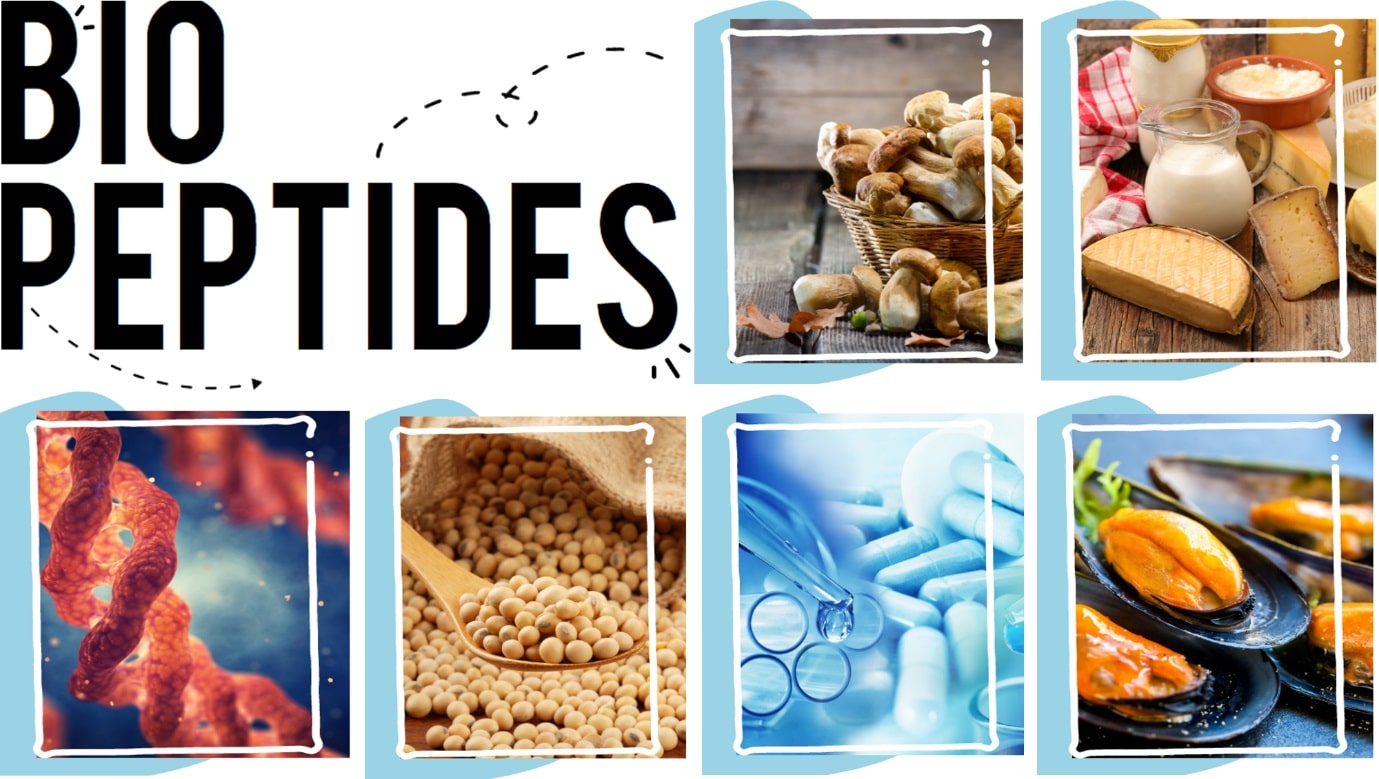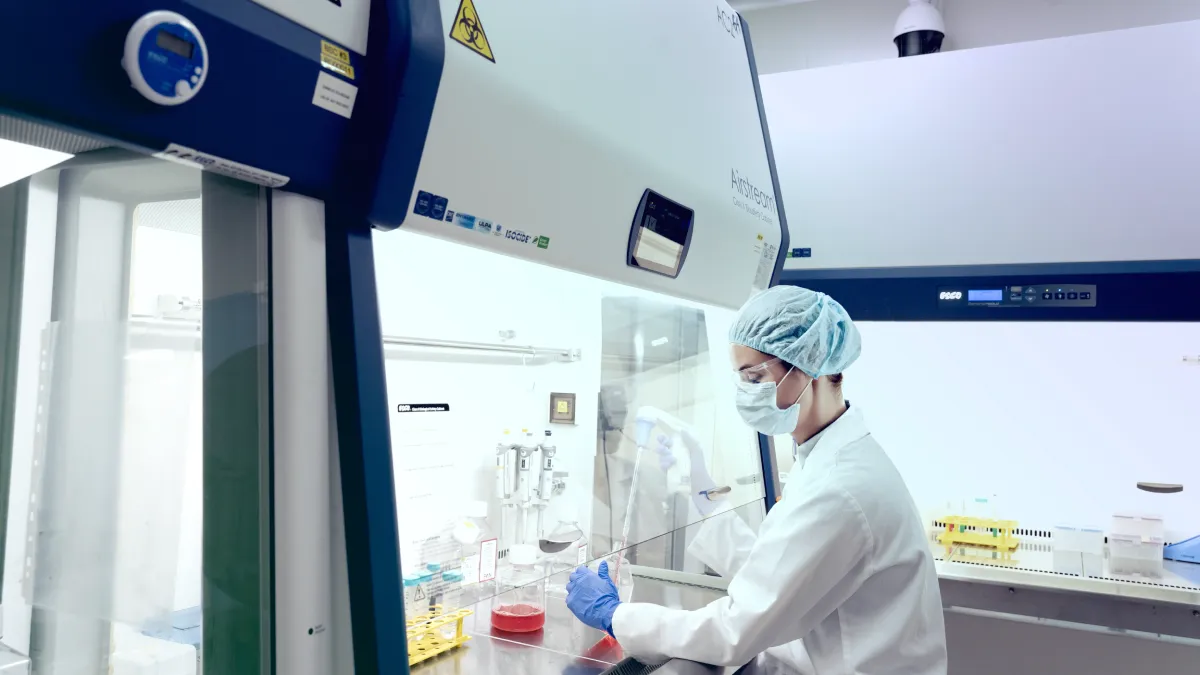
Biopeptides are organic, isolated small fragments formed by amino acids joined by amides or peptide bonds and derived mainly from food proteins like hydrolysates, shellfish, fungi, and fermented dairy products. They are considered the new generation of biologically active regulators, not only because of their high tissue affinity, specificity, stability and low toxicity, but also, their positive effects on the human body. They can function as intrinsic signalling molecules that closely mimic natural pathways upon release thru enzymatic hydrolysis.
Recently, great attention has been paid to study the roles of bioactive peptides as an antioxidant, anti-aging, antihypertensive, hypocholesterolemic, anti-inflammatory, immunomodulatory molecule, and drug conjugates. Certain food proteins, especially milk caseins from the synthesis of L. helveticus and E.coli, may act as a precursor of bioactive peptides with specific physiological benefits including:
Lowering blood pressure by inhibiting the angiotensin-converting enzyme (ACE)
Reducing oxidative stress by neutralizing and scavenging free radicals
Enhancing mineral absorption by functioning as carriers especially for calcium and iron
Reducing the risk of obesity and type 2 diabetes (NIDDM) by inhibiting the activity of glucose-6-phosphatase enzyme
Preventing formation of dangerous blood clots (acute thrombus) by allowing the body's natural clot lysis mechanisms to work normally
Increasing efficacies of cosmetic and meso-formulations such as dermal fillers, anti-pigmentation, hair growth, and body fat reduction
Furthermore, bioactive peptides have been constantly investigated across the therapeutic spectrum, reflecting their potential utility across a wider range of indications and perhaps coupled with cautious optimism that accompanies many developmental programs. Not surprisingly, aside from food, the area with the highest interest for peptide development goes to the biopharmaceutical and cosmeceutical industries which involves the following:
Biomimetic peptides – provide antiaging clinical effects as well as secreted products and cytokines from stem cell culture by producing more dense arrangement of collagen fibres in the dermis
Treatment drugs – metabolic diseases, oncology, cardiovascular diseases, autoimmune diseases,
Cancer vaccines, and
Cell-penetrating peptides (CPPs) – which are known for their ability to traverse and translocate biological membranes and to facilitate intake and uptake of numerous compounds including small molecules, nucleic acids, viruses, imaging agents and drugs intracellularly.
With all these, Esco Aster, an independent CDMO based in Singapore, utilizes high quality, efficient, dependable, and cost-effective technologies that will help developing nations to be self-sufficient in the manufacturing, storing, distribution, and administration of vaccines and other biologics.
Esco Aster is now offering the following services on Peptide Modifications:
Synthetic Services: capabilities to synthesize a broad range of therapeutic peptides/proteins through:
A novel continuous flow approach with the latest technology
Conventional Solid Phase Peptide Synthesis/ Liquid Phase Peptide Synthesis (SPPS/LPPS)
Combo methodology
Fermentation
Recombinant DNA methodology
(-services available for small scale (mg) to large scale (kg) for small to medium peptides up to 20 AA)
Comprehensive Peptide Modifications: Peptide development is filled with challenges. Due to hydrophilicity, peptides exhibit limited ability to cross physiological barriers and are confronted with efficient hepatic and renal clearance. Even once inside the systemic circulation, peptides typically have rather short half-lives due to aggressive degradation by multiple digestive proteases. These aspects have led to difficult administration routes such as direct injection of repeated doses, which resulted to low patient compliance.
Today, through technological advancements, variety of peptide modifications are now made available to increase their half-lives;
Attachment Chemistry:
PEG Modification
Linkers
Spacers
N-terminal and Side-chain Modification:
PEGylation
Acetylation (lipopeptides)
Formylation
Ring Closing Metathesis (RCM) for stapled-peptide drug, thioether formation, etc.
Peptide Macrocyclization
(-services available for small scale (mg) to large scale (kg) for small to medium peptides up to 20 AA)

Sources:
Caregen Co., LTD.Growth Factors and Biomimetic Peptides. Seul: Caregen- Dynamic, Progressive and R&D Based Company. (2015). Accessed last 11 Sept 2015 from http://www.caregen.co.kr/
Cell-Penetrating Peptides: A Useful Tool for the Delivery of Various Cargoes into Cells. (2015). Accessed last 28 Jun 2018 from http://www.biomed.cas.cz/physiolres/pdf/67/67_S267.pdf
Cosmeceutical Product consisting of Biomimetic Peptides: Antiaging Effects In vivo and In vitro. (2017). Accessed last 16 Oct 2019 from https://www.ncbi.nlm.nih.gov/pmc/articles/PMC5234555/
Current and Next Generation Influenza Vaccines: Formulation and Production Strategies. (2015). Accessed last 16 Oct 2019 from https://www.sciencedirect.com/science/article/pii/S0939641115002556
Generation of Bioactive Peptides during Food Processing. (2018). Accessed last 16 Oct 2019 from https://www.sciencedirect.com/science/article/pii/S0308814617310956
Generation of Bioactive Peptides during Food Processing. (2018). Accessed last 16 Oct 2019 from https://www.sciencedirect.com/science/article/pii/S0308814617310956
Therapeutic Peptides: Historical Perspectives, Current Development Trends, and Future Directions. (2018). Accessed last 16 Oct 2019 from https://www.sciencedirect.com/science/article/pii/S0968089617310222
Sign up to our newsletter and receive the latest news and updates about our products!
